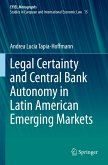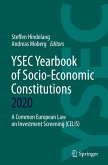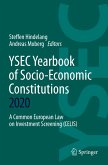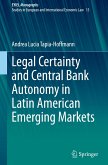This book deals with banking integrations, which are now becoming crucial not only because of the increased number of economic integrations, but also in view of the qualitative improvement of such banking integrations. It compares the European Union (EU), as the most successful union, which was able to move from a common financial market to the prime example of banking integration; the Banking Union; and the Eurasian Economic Union (EAEU) as a relatively young one but with several of the prerequisites for becoming an influential union, and which was established by five countries - the Russian Federation, Kazakhstan, Belarus, Armenia, and the Kyrgyz Republic - in 2015.
The key research question is whether the single market in banking services or a banking union is an achievable goal or merely a utopia. In this regard, the book reveals the bottlenecks and obstacles that the EU and EAEU policymakers faced during the difficult process of establishing a single market andbanking union. However, along with the problems of banking integration, it identifies many peculiarities of the harmonization of banking legislation among the EU Member States. Recognizing and acknowledging these peculiarities can be very beneficial for young unions and help to guide their integration processes. In particular, the book concludes that evolutionary (not revolutionary) harmonization is required in order for the EAEU to become a full-fledged union.
The key research question is whether the single market in banking services or a banking union is an achievable goal or merely a utopia. In this regard, the book reveals the bottlenecks and obstacles that the EU and EAEU policymakers faced during the difficult process of establishing a single market andbanking union. However, along with the problems of banking integration, it identifies many peculiarities of the harmonization of banking legislation among the EU Member States. Recognizing and acknowledging these peculiarities can be very beneficial for young unions and help to guide their integration processes. In particular, the book concludes that evolutionary (not revolutionary) harmonization is required in order for the EAEU to become a full-fledged union.








